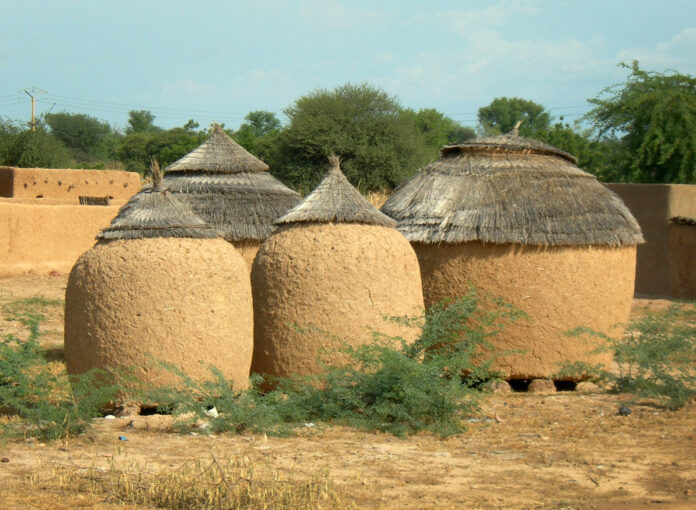In the heart of West Africa, long before modern air-conditioning and refrigeration, the Bambara people of Mali perfected a storage system so clever it could pass as early climate engineering.
Their granaries—those rounded, clay-and-thatch structures you might see scattered across Sahelian villages—were not just barns for grain. They were masterpieces of thermal design, developed through generations of observation and adaptation to one of the world’s harshest climates.
At first glance, a Bambara granary seems simple: a raised circular structure made of mud plaster and crowned with a conical thatched roof. Yet its form is anything but random. The thick clay walls act like natural insulators, absorbing heat during the day and releasing it slowly at night. This regulates interior temperatures so grain stays cool and dry, even when the outside air is baking hot.
The elevated base, usually supported by short pillars, keeps moisture, termites, and rodents at bay. These features combined gave the Bambara people a reliable way to preserve millet and sorghum through months of drought and scarcity.
What’s less known is that these granaries also doubled as social symbols. The size of a family’s granary was a quiet indicator of its wealth, strength, and agricultural success. Building one wasn’t just a technical act but also a cultural statement. Oral tradition even associates certain designs with fertility and abundance, tying architecture directly to spiritual life.
The science behind their design is remarkable. Studies of their thermal performance show that internal temperatures in Bambara granaries remain on average 5–10°C cooler than the surrounding air, a difference that can make or break a harvest’s survival in the Sahel. The sloping conical roof, seemingly decorative, also channels hot rising air upward, creating a natural ventilation system without a single mechanical part. Essentially, these granaries embody the principles of passive cooling long before engineers gave the concept a name.
In today’s world, where food waste and climate change remain pressing challenges, the Bambara granary offers a lesson worth revisiting. Its sustainable design shows that innovation doesn’t always mean high-tech gadgets—it can mean listening to the wisdom already embedded in traditional African knowledge systems. In fact, architects and agricultural planners are now studying these granaries to inspire modern eco-friendly storage solutions.
The ingenious thermal design of Bambara granaries proves that African ingenuity has always been at the forefront of solving real human problems. They are not relics of a bygone era but blueprints for a future where food security and sustainable living go hand in hand.


hello!,I like your writing very much! share we communicate more about your article on AOL? I need an expert on this area to solve my problem. Maybe that’s you! Looking forward to see you.